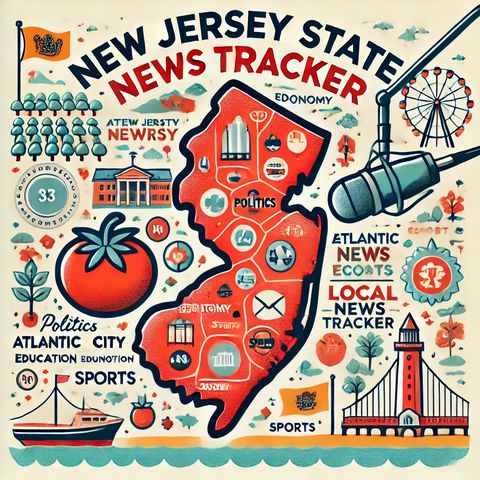West Milford Wildfire Exposes New Jersey's Growing Environmental Challenges and Fire Risk Vulnerability

Descarga y escucha en cualquier lugar
Descarga tus episodios favoritos y disfrútalos, ¡dondequiera que estés! Regístrate o inicia sesión ahora para acceder a la escucha sin conexión.
West Milford Wildfire Exposes New Jersey's Growing Environmental Challenges and Fire Risk Vulnerability
Esta transcripción es generada automáticamente. Ten en cuenta que no se garantiza una precisión absoluta.
Descripción
New Jersey, often affected by various natural and man-made disturbances, recently witnessed a significant wildfire in West Milford, which stretched across state lines into New York. This incident has brought...
mostra másThe West Milford fire, as reported, consumed approximately 2,000 acres and was initially reported to have 0% containment, posing a serious risk to the local environment and nearby residential areas. Firefighters from the New Jersey Forest Fire Service and other cooperating local agencies were immediately deployed to tackle the blaze using ground and aerial firefighting techniques.
This event draws attention not only to the immediate impacts of such fires—destruction of timber, wildlife habitat loss, and potential damage to homes and other structures—but also to the broader environmental and regulatory challenges. In particular, issues of land management practices, climate change effects on regional weather patterns, and the role of human activity in increasing fire risks are paramount.
Recent studies have shown that New Jersey, with its unique geographical and climatic conditions, is increasingly susceptible to larger and more uncontrollable fires, similar to those traditionally seen in the western United States. This susceptibility is exacerbated by dense undergrowth and an increasing frequency of dry and windy conditions, which are conducive to the spread of wildfires.
Furthermore, in response to such emergencies, New Jersey has been proactive in developing strategies that not only address the immediate firefighting needs but also incorporate preventive measures. These include controlled burns, which are intentional fires set by forest service professionals to reduce the amount of combustible material naturally present in the wilderness.
On the regulatory side, the involvement of law enforcement in issues related to wildfire incidents reflects the seriousness with which such matters are taken. For instance, individuals found responsible for causing fires through negligence or arson face severe legal consequences which often involve charges related to arson and violations of specific environmental regulations.
Local communities are also instrumental in managing fire risks. Public awareness campaigns and educational programs on fire safety and preventive practices are widespread. These initiatives aim to equip residents with the knowledge to minimize fire risks effectively and understand the necessary steps during and after incidents of wildfires.
The recent wildfire in West Milford underscores a clear message: the management of wildfire risks requires a coordinated approach involving policy planning, community preparedness, and adherence to environmental laws and regulations. As climate patterns continue to evolve, so too must the strategies employed by states like New Jersey to mitigate and respond to these natural disasters effectively.
Información
| Autor | QP-4 |
| Organización | William Corbin |
| Página web | - |
| Etiquetas |
Copyright 2024 - Spreaker Inc. an iHeartMedia Company
